Principles for good waterfront development
Rideau Canal National Historic Site
Introduction
The Rideau Canal has been honoured with many distinctions:
- National Historic Site
- Canadian Heritage River
- UNESCO World Heritage Site
Stemming from the 2012 Rideau Corridor Landscape Character Assessment and Planning and Management Final Report, the following principles provide guidance on how waterfront and shoreline development and redevelopment can respect, protect and enhance these values, through property owner’s actions and municipal decision making.
Principles
- Understand and respect the local landscape character
- Conserve historic buildings and cultural heritage features
- Conserve, protect and enhance wetlands
- Maintain and retain natural shoreline
- Locate development back from the shoreline
- Work with the landscape, not against it
- Design buildings to complement the site
- Design residential docks and boathouses for low impact
- Protect water quality
- Prevent hazards and property damage
Applying these principles will support the long term conservation of the Rideau and Tay Canal corridor’s unique, valued landscapes, so that all Canadians can enjoy this legacy into the future. Please contact your local municipality to discuss how these principles can apply to your property.
- Principles for Good Waterfront Development (PDF, 2.3 MB)
1. Understand and respect the local landscape character
The Canal’s varied landscapes include rocky forested uplands, wetlands, rural and agricultural landscapes, historic villages and developed urban landscapes. The highest quality development is consistent with this diversity, blends with or enhances the canal’s landscape character and supports its cultural, ecological and economic value. See the Landscape Character Assessment Report to learn about the landscape types in your area.

2. Conserve historic buildings and cultural heritage features
It is particularly important to conserve and reuse historic houses and cottages, lodges, mills, barns, fences and other cultural heritage features to preserve the landscape character of the Rideau corridor. Aboriginal communities share a long history and relationship with the pre and post canal landscape. Archaeological resources found along the corridor shed light on this history.

3. Conserve, protect and enhance wetlands
Wetlands are one of the most important and vulnerable natural resources on the Rideau Canal. Loss of wetlands results in the decline of wildlife and natural vegetation, water quality, recreation and education opportunities.
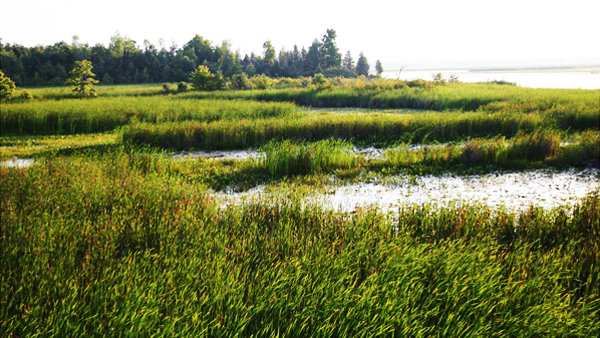
4. Maintain and retain natural shoreline
Naturalized shorelines reduce visual impact of buildings, maintain the landscape’s natural character, control erosion, filter run‐off, reduce sediment transfer and provide habitat for wildlife, including species at risk. They can also provide privacy and reduce maintenance costs for property owners. A buffer of natural shoreline extending to the water also discourages Canada Geese from wandering onto open lawns and the invasion of noxious weeds.

5. Locate development back from the shoreline
Generally, new development must be set back a minimum of 30 metres from the shoreline. This aligns with the 30 metre buffer zone extending from the boundary of the Rideau Canal World Heritage Site. Development setbacks help to maintain landscape character, protect water quality, maintain ecological functions along shorelines and wetlands and help prevent property damage.
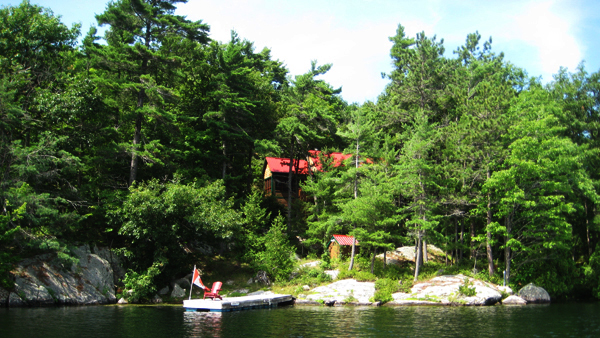
6. Work with the landscape, not against it
New buildings and associated services should be located within existing open areas on the site. The remainder of the site should be maintained in its natural state, or re-established with native plants. This helps to blend buildings into their natural surroundings and the canal setting.
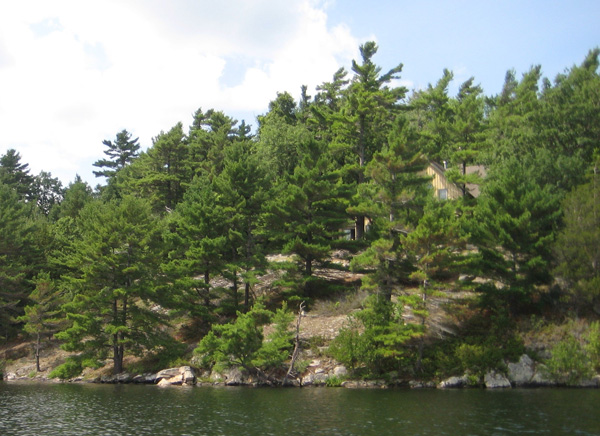
7. Design buildings to complement the site
New buildings should be designed to complement the landscape character and architectural style of the surrounding area. Buildings should be in proportion to the size and frontage of the property and fit in with the surrounding built environment. Throughout most of the waterway, buildings should be low profile and not exceed the height of the tree canopy. Taller buildings may be appropriate in more urbanized areas.
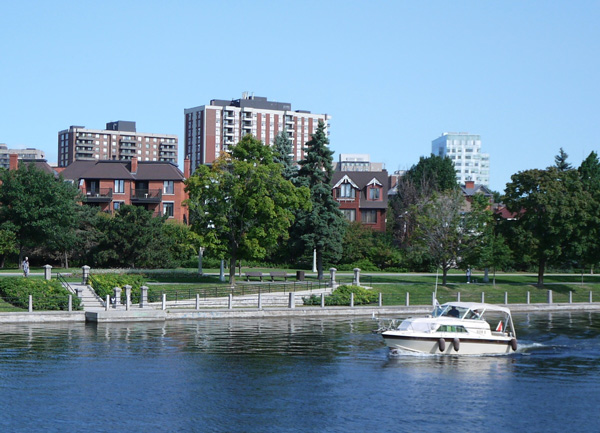
© City of Ottawa
8. Design residential docks and boathouses for low impact
Docks, water access and boathouses, where permitted, must adhere to Parks Canada’s Policies for In-Water and Shoreline Works and Related Activities and require a permit from Parks Canada before work can begin. Such activities must avoid negative impacts to fish, wildlife, navigation and the natural and visual qualities of the shoreline. Other provisions may apply to non-residential water-based facilities.
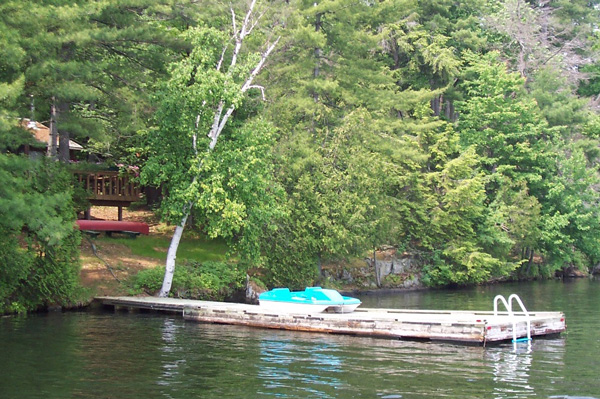
9. Protect water quality
Storm water and septic tank effluent (for example lawn fertilizer and pesticides) should be directed away from the canal to protect water quality, fish habitat and prevent algae blooms. Use septic-safe and phosphate-free products only. Use of lawn fertilizers and pesticides should be avoided.
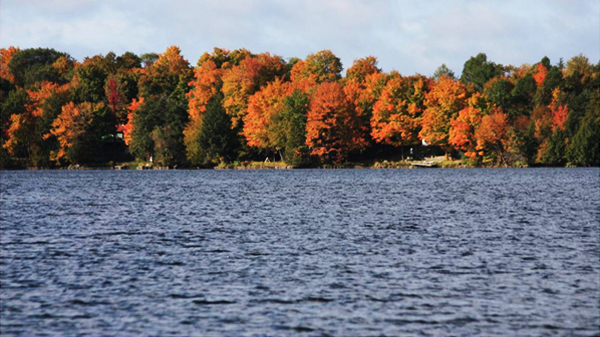
10. Prevent hazards and property damage
Shoreline development can result in hazards such as flooding, erosion, and slope instability which can threaten property and human safety. Shoreline development should not aggravate these natural hazards or create new hazardous conditions. Hardened, artificial shorelines may transfer erosion to neighbouring areas by deflecting waves and ice.
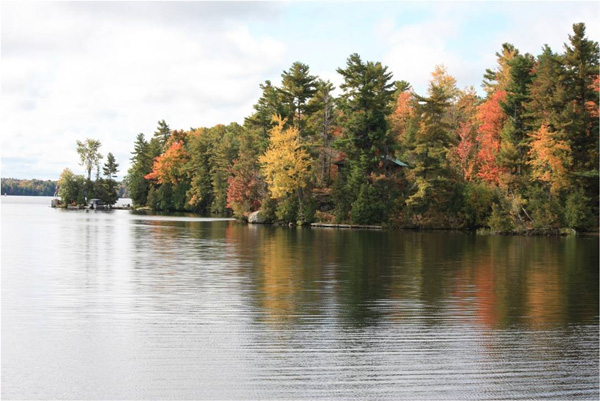
Related links:
- Rideau Canal National Historic Site of Canada Management Plan, Parks Canada, 2005.
- Rideau Canal World Heritage Site Management Plan, Parks Canada, 2005.
- Policies for In-Water and Shoreline Works and Related Activities, Parks Canada, 2007.
- Information for Shoreline Property Owners, Parks Canada, 2013.
- Standards and Guidelines for the Conservation of Historic Places in Canada, Parks Canada, 2010.
- Rideau Corridor Landscape Strategy
- Rideau Corridor Landscape Character Assessment and Planning and Management Recommendations Final Report, Parks Canada, 2012.
- The Shore Primer (PDF 1.53 MB), Fisheries and Oceans Canada, 2008.
- Solutions for Shoreline Erosion (PDF 1.27 MB), Eastern Ontario Conservation Authorities and Ontario Ministry of Natural Resources, 2011.
- Eight Guiding Principles in the Conservation of Built Heritage Properties (PDF 284 KB). Ministry of Tourism, Culture and Sport, 2007.
Related links
- Date modified :